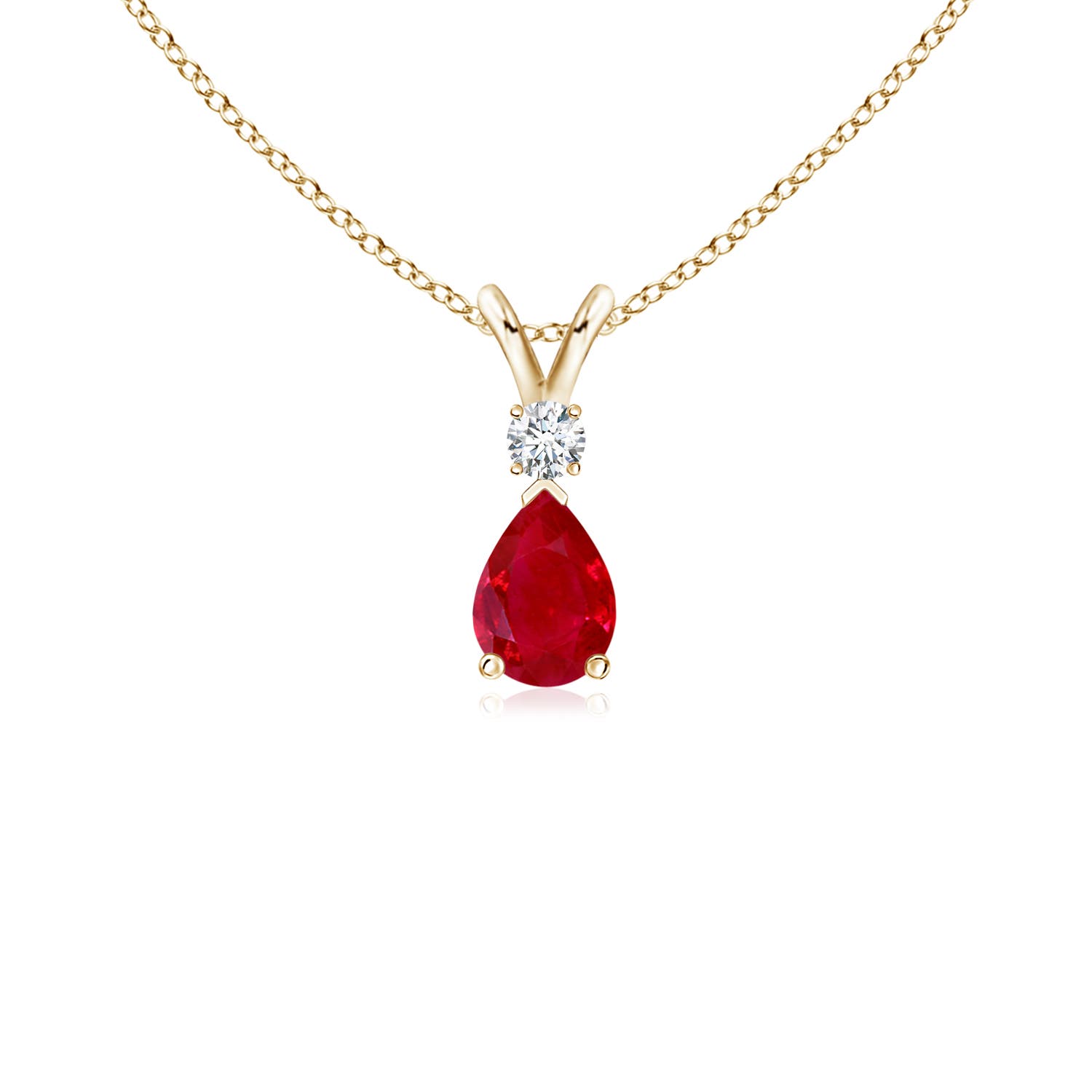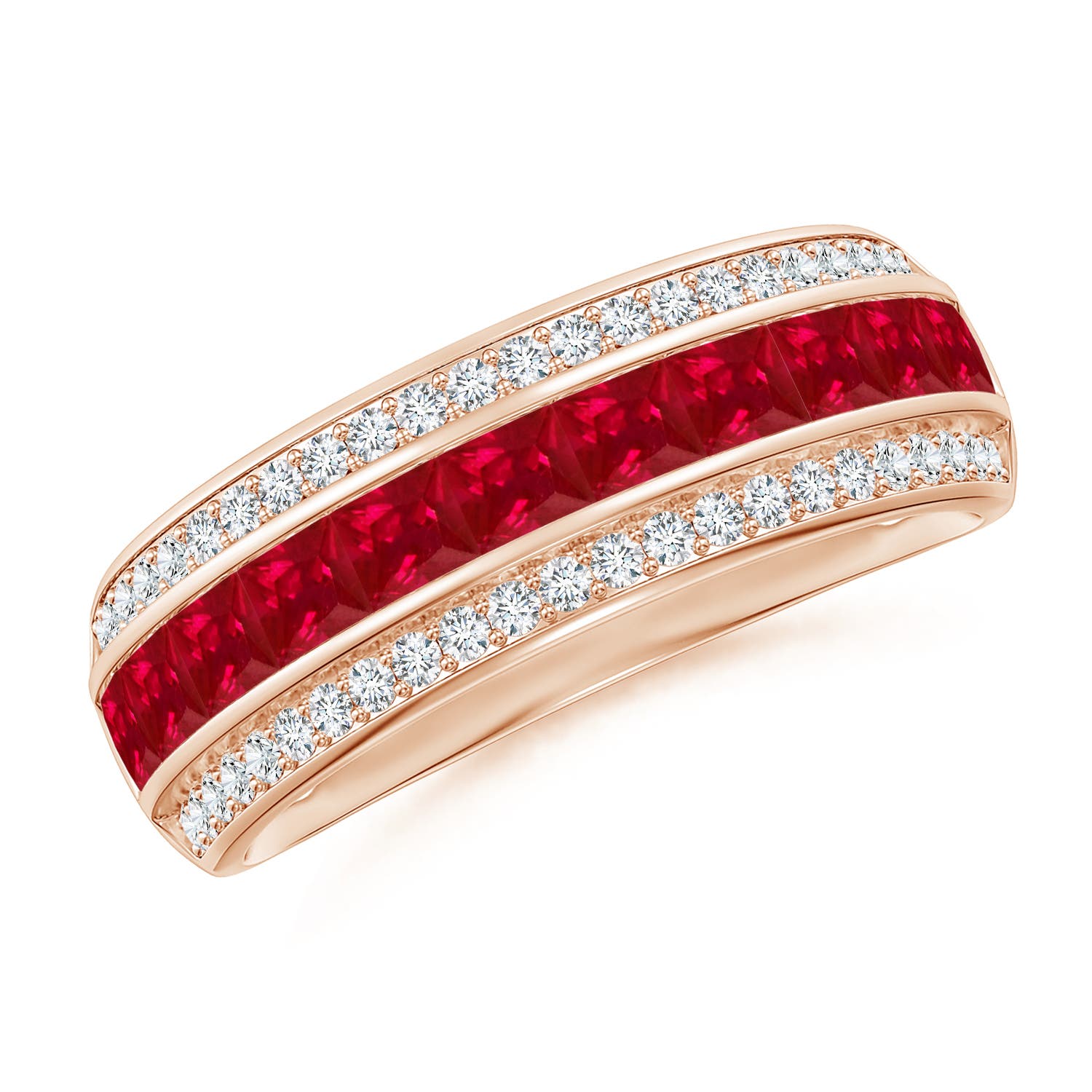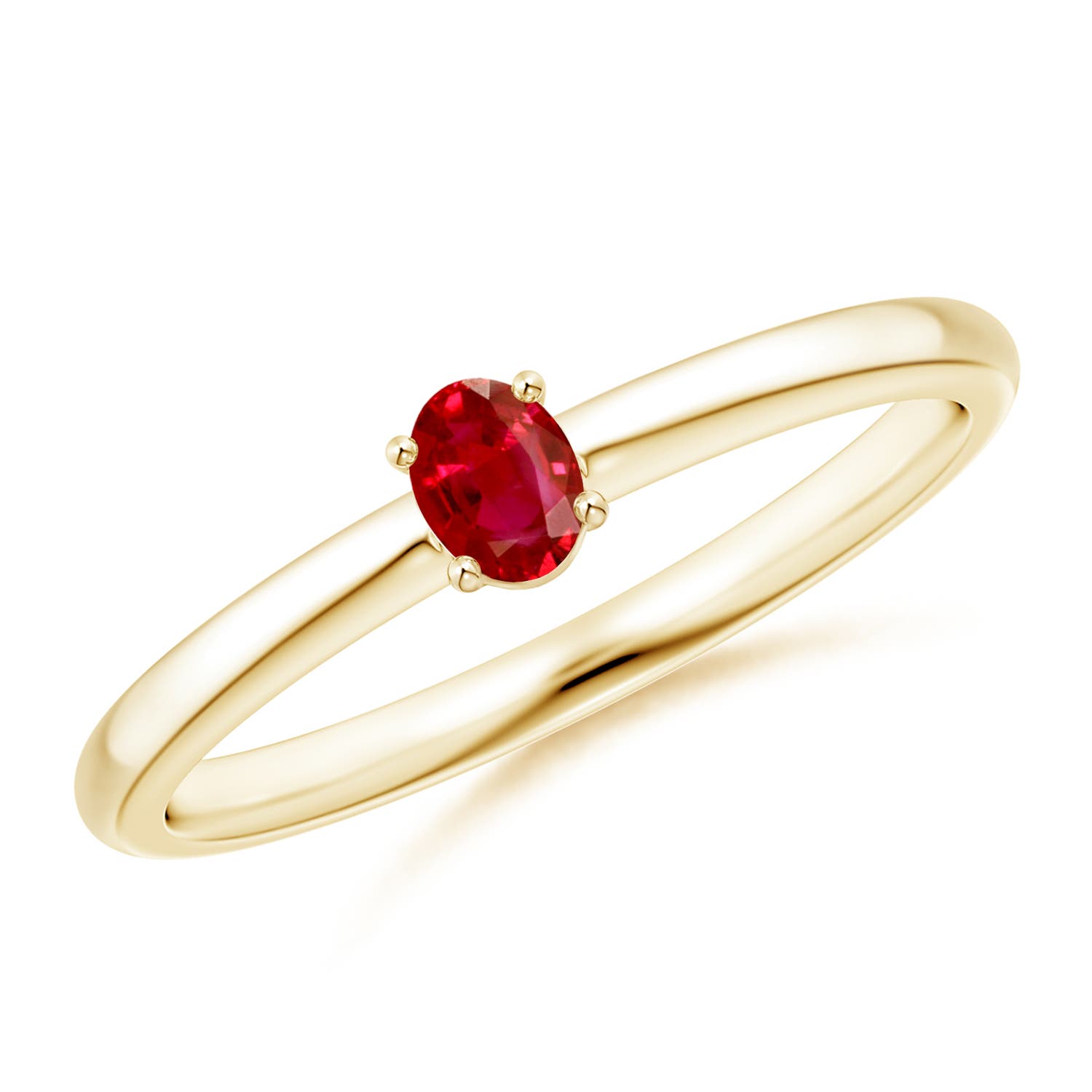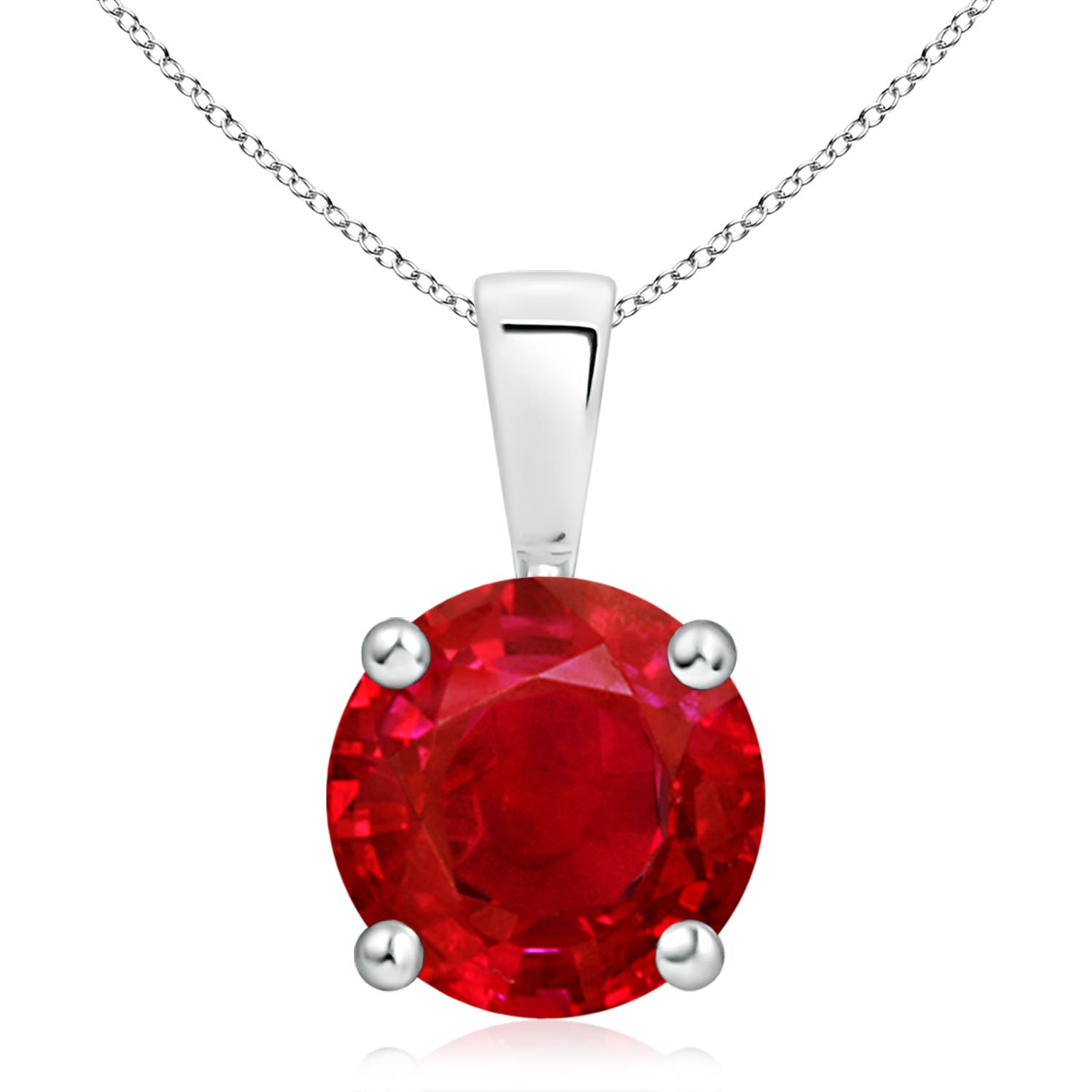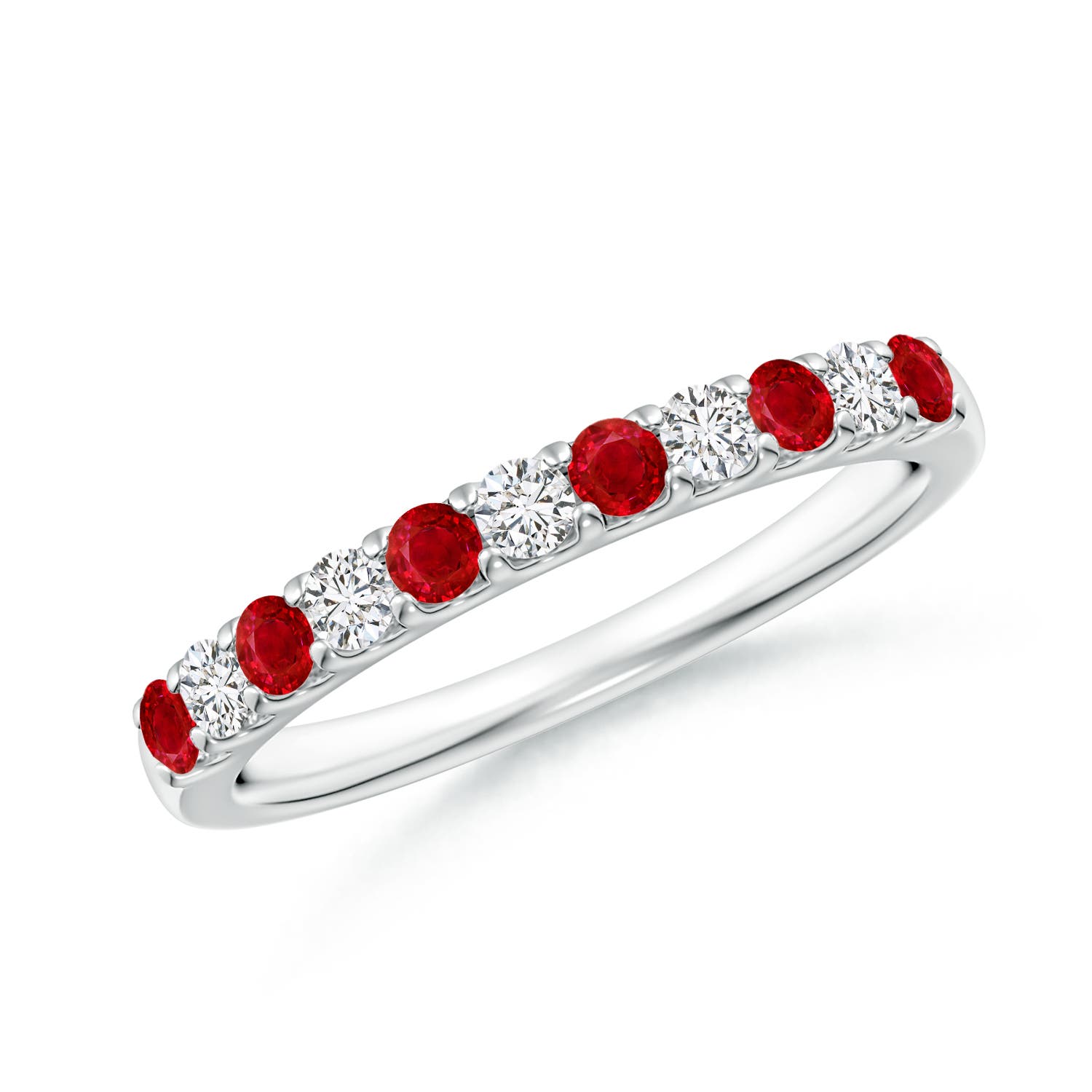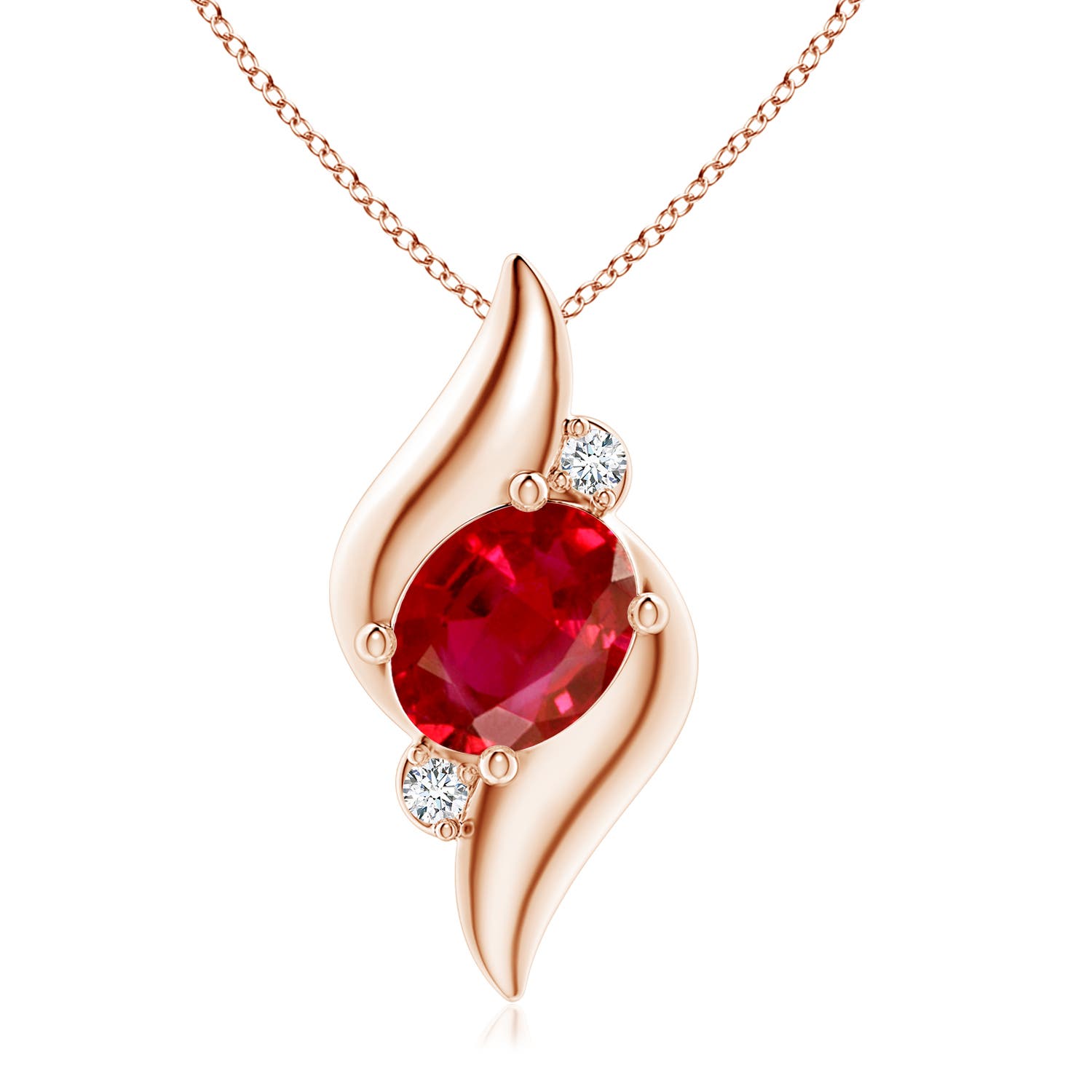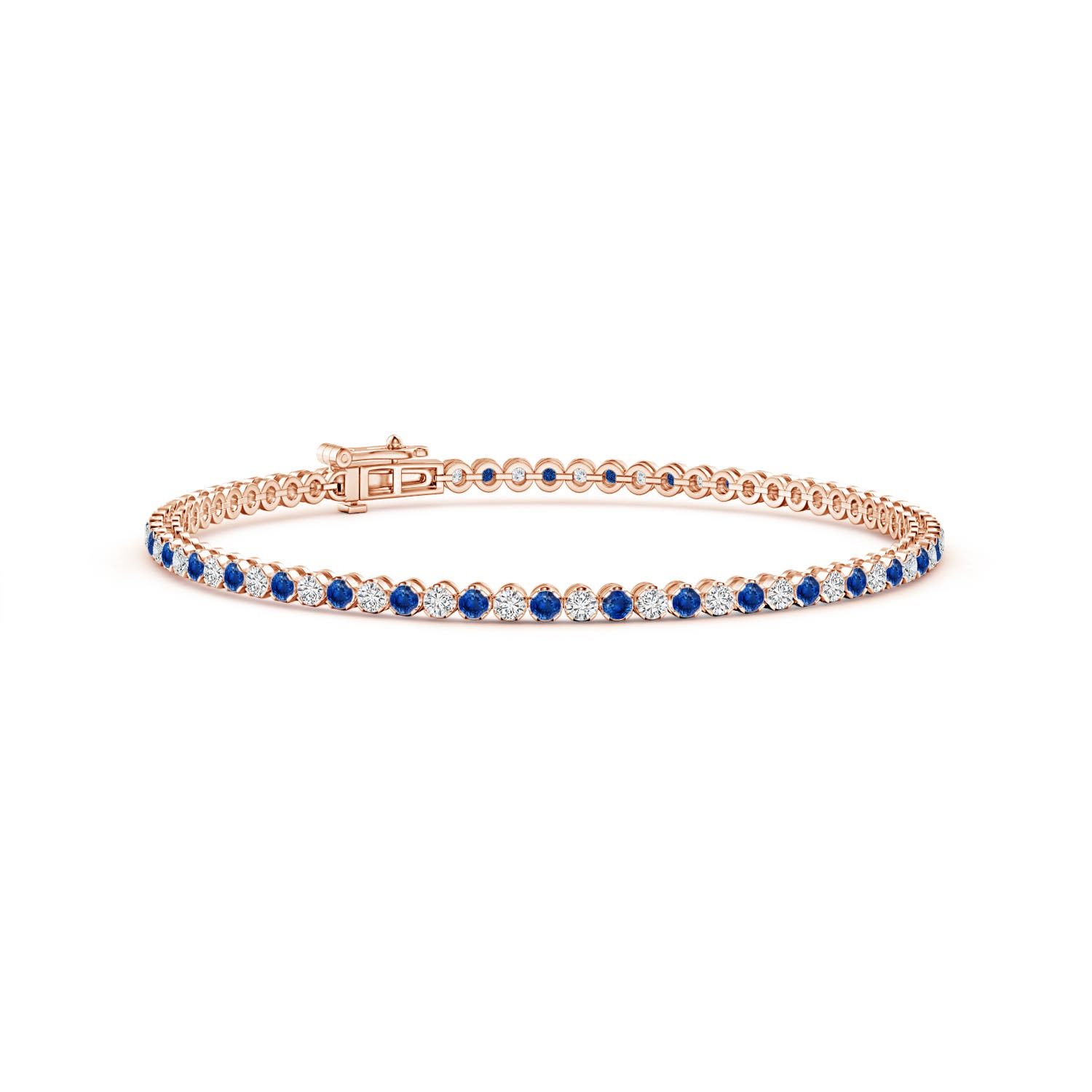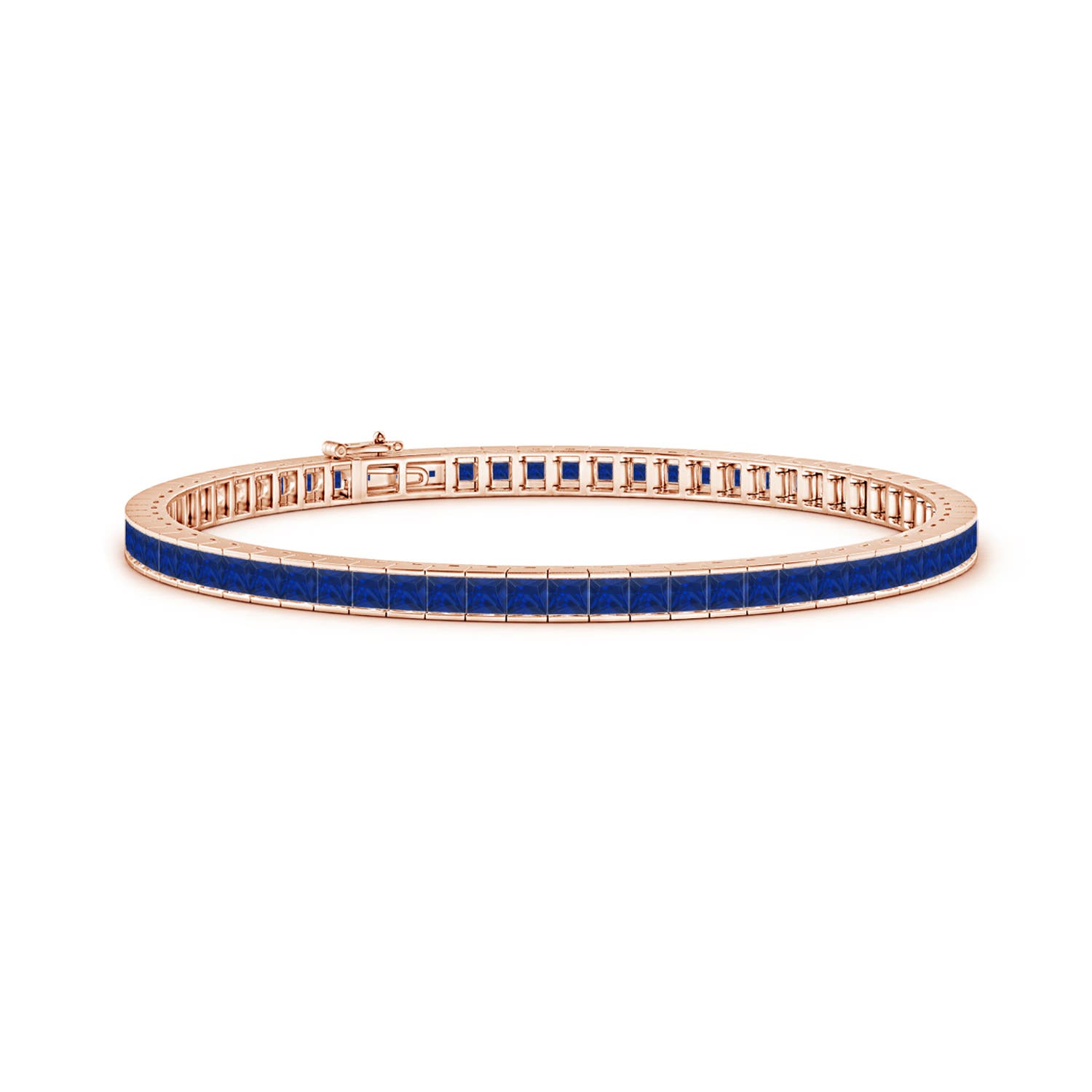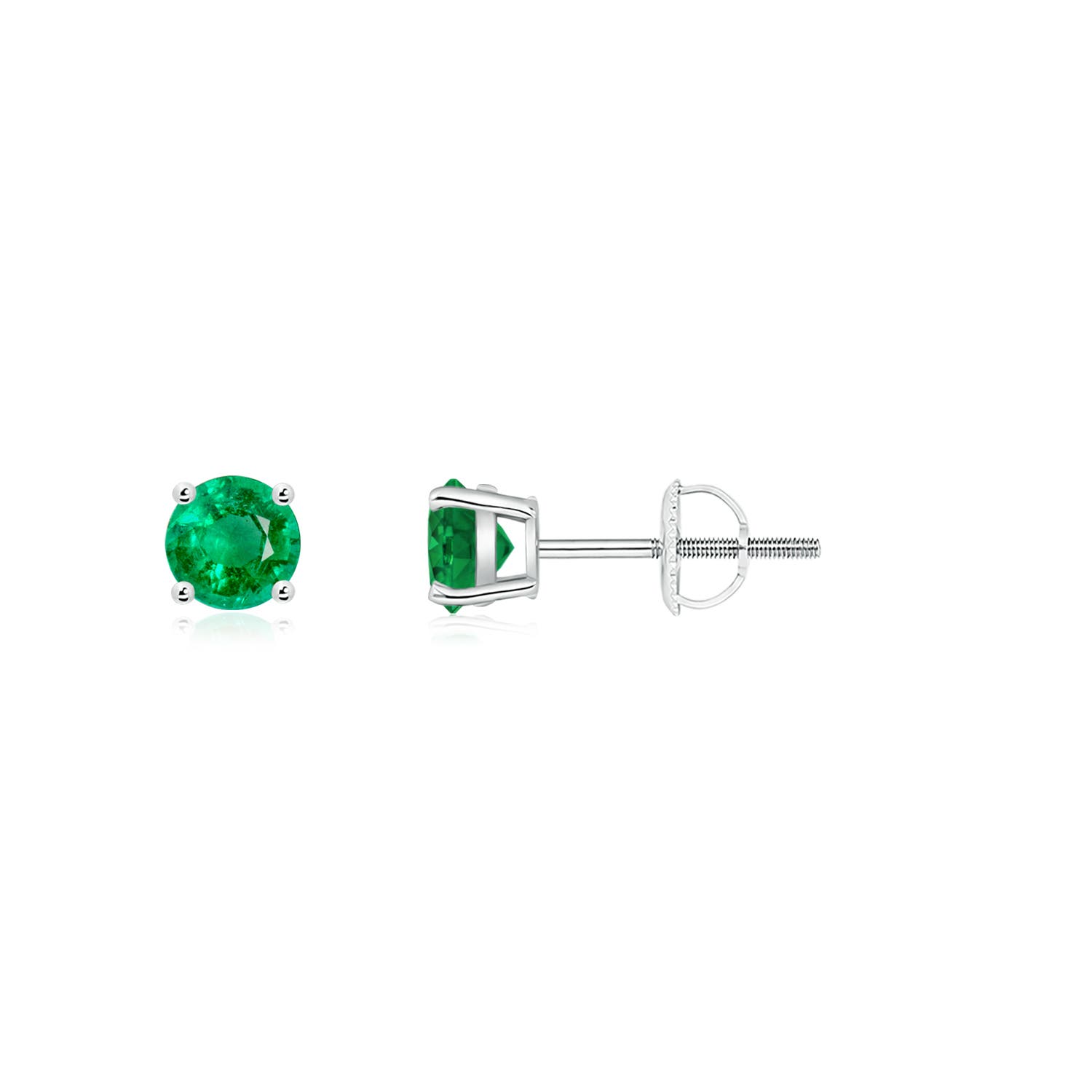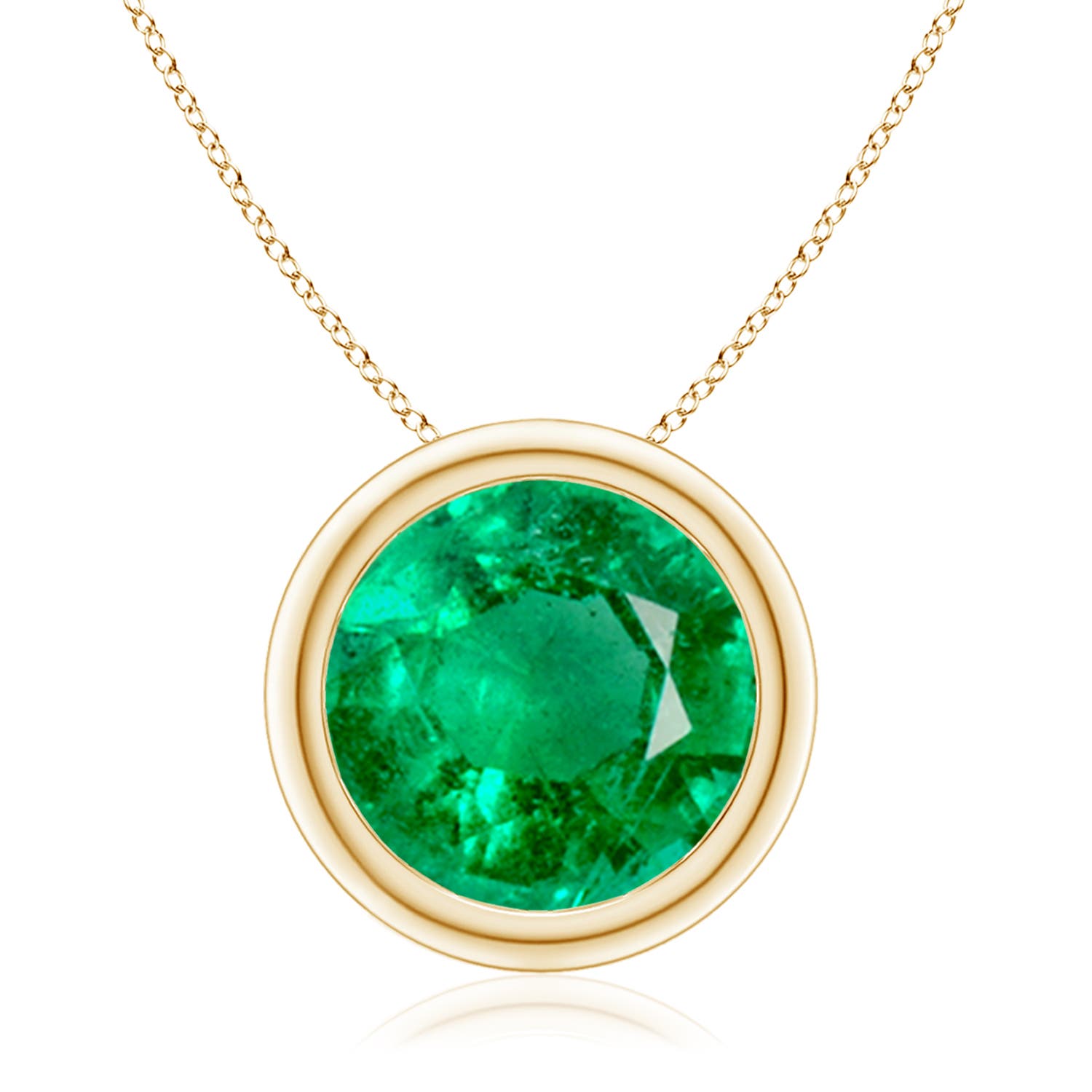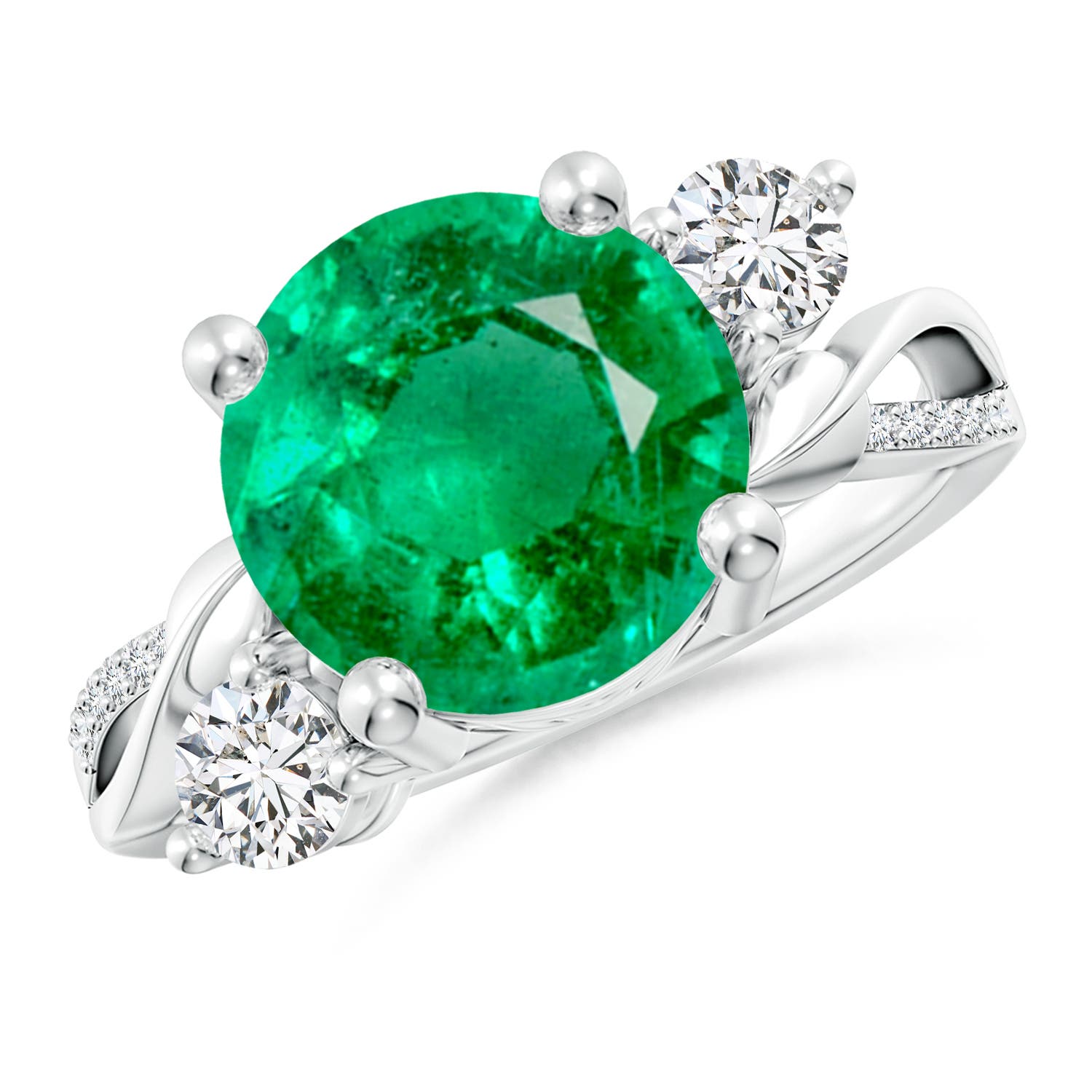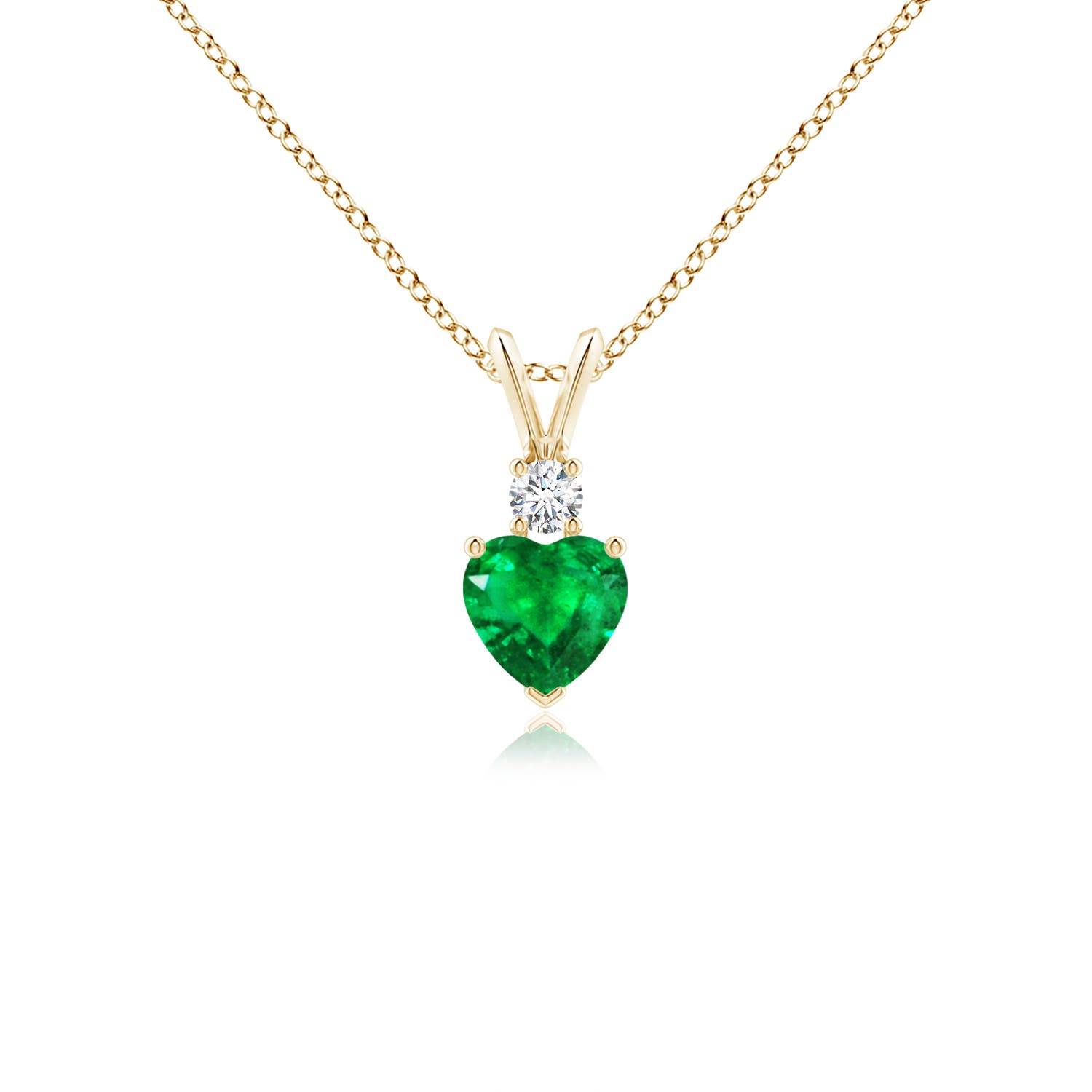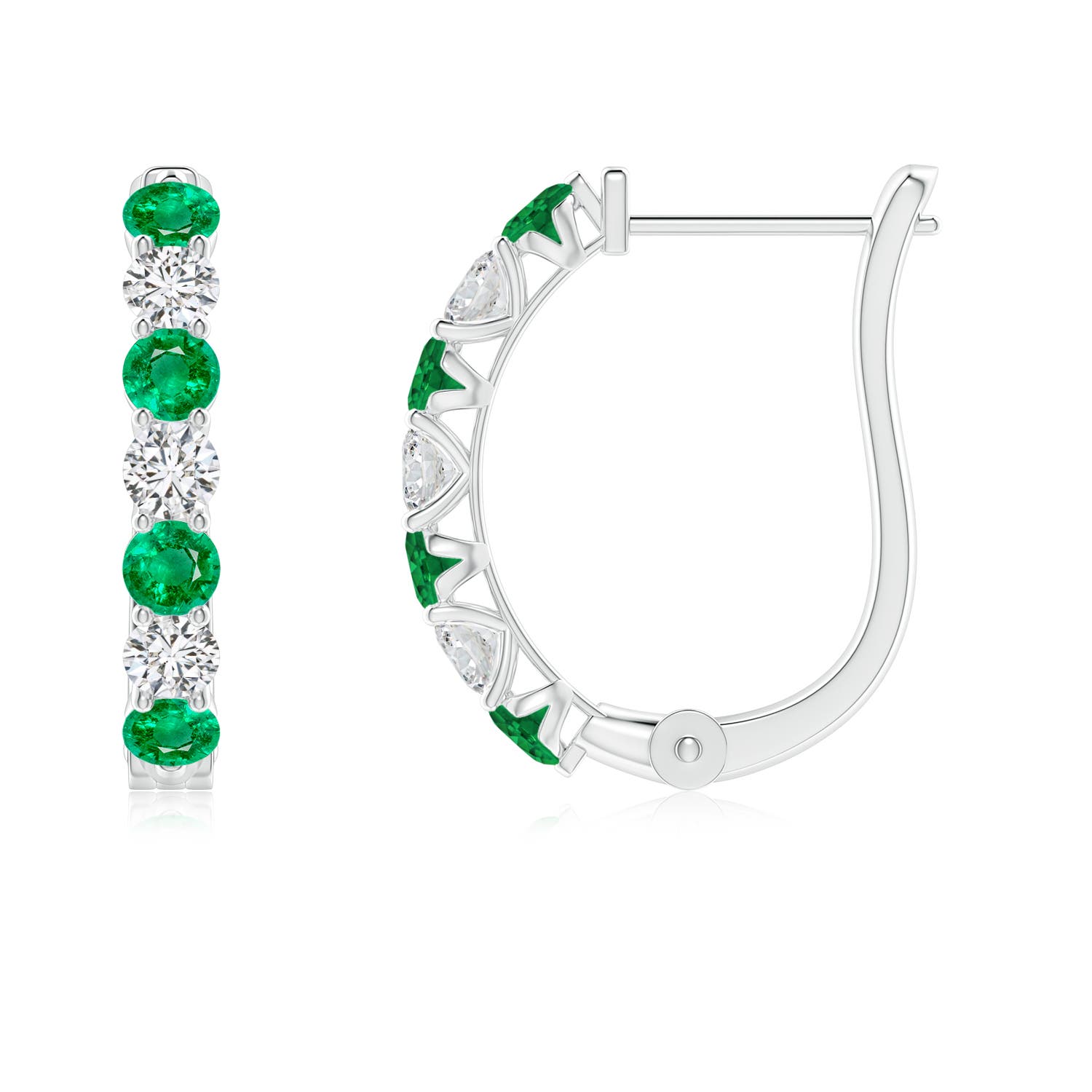The big three gemstones – ruby, sapphire and emerald – are known for their endless beauty, vibrant colours and symbolism. In the world of coloured gemstones, these are the top three choices for jewellers and a must-have for every jewellery lover.
However, if you have to pick one of these gemstones, you need to know more about each of them. A stone’s quality determines its value and price, which is why it is an important factor to consider when choosing among these gemstones.
How do ruby vs emerald vs sapphire differ, and which is the best choice for you? Before we dive into their differences, you need to know about each gemstone. In this guide, we’ll take you through the differences between the three gemstones. Ready? Let’s get started.
What Is a Ruby?

The name ruby is derived from the Latin word ‘ruber.’ This bright red gemstone, also known as the king of gems, is a July birthstone and the gem for the 15th and 40th wedding anniversaries. It symbolises love, passion, commitment, bravery and nobility.
This gemstone forms under extreme heat and pressure beneath the Earth’s crust. It is created by the mineral corundum (formed by compressed oxygen and aluminium atoms) along with chromium.
Ruby was first discovered in an area in Myanmar’s Mogok region (formerly Burma). It became one of the most sought-after gemstones, with ruby jewellery worn by royals and the upper class due to its high value and price.
Shop Ruby Jewellery
You have the power to transform your look.
What Is a Sapphire?

The name sapphire originated from the Greek word ‘sappheiros.’ Its most common colour is blue, but it is also found in other colours except red. This September birthstone is also the gem for the 45th wedding anniversary. It represents truth, nobility, faithfulness, loyalty and sincerity.
Sapphires are formed by the mixing, shifts and chemical changes that continually take place on Earth. Like rubies, sapphires are made of corundum with trace amounts of other elements such as iron and titanium.
This exotic gemstone has been popular since the Middle Ages and was loved by royalty. The classic violet-blue gemstone was first discovered in Kashmir, India, in the late 19th and early 20th centuries. The royal association with sapphire was emphasized when Britain’s Prince Charles gave Lady Diana Spencer a blue sapphire engagement ring in 1981.
Shop Sapphire Jewellery
Add colour to your life.
What Is an Emerald?

The name emerald comes from the Greek word for green, ‘smaragdus.’ This bluish-green gemstone is the birthstone of May and the gem for the 20th and 35th wedding anniversaries. It signifies rebirth, truth, loyalty, love, peace and new beginnings.
Most emerald stones form in contact with metamorphic rocks heated by the intrusion of hot magma. The area of contact is a narrow baked zone of sedimentary rocks like shale or limestone. Emeralds belong to the beryl mineral family, an incredibly rare element in the universe, and they contain trace amounts of chromium or vanadium.
Emeralds were first mined in Egypt between 330 BC and the 1700s. However, it wasn’t until the Spanish plundered them in the 16th century and traded them for precious metals (which they considered more valuable) that European and Asian royalty noticed them.
Shop Emerald Jewellery
Go green with emeralds.
Ruby vs. Sapphire vs. Emerald: What’s the Difference?

If you’re choosing among ruby, sapphire and emerald jewellery, here are some factors you should consider.
Colour
Ruby’s distinct blood-red colour is due to the presence of chromium. However, there are instances when the colour can be pink-red, purple-red, orange-red or brown-red due to the presence of iron.
Sapphire’s wide range of colours comes from elements like iron and titanium present in corundum. The colour and saturation can vary with a higher amount of these trace elements.
Emerald’s bluish-green to pure-green colour is obtained from the presence of chromium, sometimes vanadium and iron. The amount of these elements can vary and determine the colour an emerald has.
Clarity
A stone’s clarity refers to the presence of external and internal flaws known as inclusions.
Most rubies have inclusions due to the immense pressure they undergo when they are created. These inclusions may take the form of tiny crystals, colour patches or needles.
Most sapphires also contain inclusions such as conclaves, colour zoning, cavities, discoid fractures, fingerprint inclusions and silk. However, there are high-quality sapphires that are generally eye-clean, which means no flaws are visible to the naked eye.
A whopping 99% of emeralds have visible inclusions called ‘Jardin’ (meaning ‘garden’ in French) because they add to the stone’s beauty. However, emeralds without inclusions are rare and more valuable.
Cut and Shape
The cut of a stone refers to its proportions, facet arrangement and finish, which differs from its shape – that is, the outline of a gemstone.
Rubies are typically cut to optimise their colour and brilliance. The most common shapes are cushion and oval, which enhance the stone’s deep red hue.
Because sapphires come in various colours, they are well suited to multiple cuts that best enhance their colour. The most popular shapes are round, oval and cushion.
Emeralds are often cut to enhance their colour and minimize the impact of inclusions, with square or rectangular step cuts being top choices for this vibrant stone.
Treatment
When a gemstone is treated, it has been altered to improve its appearance, including colour, clarity, durability, value, etc.
Rubies of lower grades are more common than high-quality ones. Hence, they undergo heat treatment to improve their colour and clarity and remove colour zoning.
Like rubies, sapphires are heat-treated to improve their colour and clarity. This gives lower-grade sapphires a better appearance, but it also makes natural, untreated sapphires more valuable.
Emeralds undergo fracture-filling using heat and pressure to treat inclusions like cracks, internal gas bubbles and embedded crystals. This enhances their appearance and durability.
Hardness and Durability
The hardness of a gemstone refers to how much it can withstand scratching and abrasion. The harder a gemstone, the higher its durability.
Since rubies and sapphires are part of the same mineral family of corundum, they are ranked 9 on the Mohs Hardness Scale, right behind diamond stones at 10.
On the other hand, Emeralds rank 7.5 to 8 on the Mohs scale, similar to a steel file. While they may not be as hard as rubies or sapphires, they are still resilient.
Popularity
Natural rubies, emeralds and blue sapphires are the rarest, most loved and most popular gemstones worldwide. Their unique qualities and range of colours make them fascinating. While they may not be traditional stones, they have made a mark in history and are some of the most coveted coloured gems worldwide.
Ruby vs. Sapphire vs. Emerald: Value and Price

The value of a gemstone is typically determined by its quality, rarity, colour, clarity and treatment. Needless to say, untreated gemstones are rare and reasonably more expensive than treated ones. However, there are also lab-grown (synthetic) gemstones that are significantly cheaper than natural ones.
Ruby, sapphire and emerald are three of the rarest gemstones, even rarer than diamonds, especially high-quality ones. Hence, it is no surprise that they are costly.
Emerald and ruby prices aren’t that far off from each other, but they can vary depending on the quality of each stone. A one-carat ruby of fine quality can range from $1,000 to over $100,000. The record shows that a ruby of fine quality sold for over $1,000,000 per carat.
Similarly, one-carat emeralds can range from less than $1,000 to over $100,000. The price for Elizabeth Taylor’s emerald pendant was $280,000 per carat in 2011.
The emerald vs blue sapphire prices vary significantly because sapphires come in different colours. Cornflower/royal blue sapphires and orange-pink sapphires are the most valuable. A fine-quality one-carat sapphire can cost between $500 and $3,000. The record for the Elizabeth Taylor Sapphire Necklace by Bvlgari, a Burmese stone, sold at auction in New York for $5,906,500 per carat in 2011.
Want to add gorgeous sapphire pieces to your collection? Cheque out Angara’s blue sapphire jewellery collection and shop your favourites.
Ruby vs. Sapphire vs. Emerald: Which One Should You Choose?

The stone that’s right for you is one that meets your preferences and falls within your budget. Whether you’re looking for a stone with unique symbolism or you want to add staple jewellery to your collection, these stones are great options. However, it is up to you to decide which is suitable for you and perfect for your lifestyle.
Frequently Asked Questions
Q1. Are emeralds more expensive than sapphires?
The price of emeralds and sapphires varies greatly depending on the stones’ quality, origin, and rarity. Sometimes, sapphires are more expensive than emeralds, and vice versa.
Q2. Are emeralds more expensive than ruby?
Emeralds and rubies are pretty similar in price. However, this is not always the case because of their varying qualities.
Q3. Which gemstone is more popular for engagement rings?
Blue sapphires are becoming especially popular for engagement rings because of their durability and symbolism.
Q4. What are the symbolic meanings of emeralds and rubies?
Emeralds symbolize truth, love, loyalty, peace, rebirth and new beginnings. Rubies symbolize power, bravery, love, commitment, passion and nobility.

























